
nastysynth
Sylwester | i will mostly post sketches, because i'm too lazy to end them
196 posts
Latest Posts by nastysynth
Jeez man, I really love the way you color. It's simple, yet everything is needed to know is there. How you do it
THANK YOU SO MUCH <3
Can't explain it all in words, so i made a tutorial. Hope it explains well xD




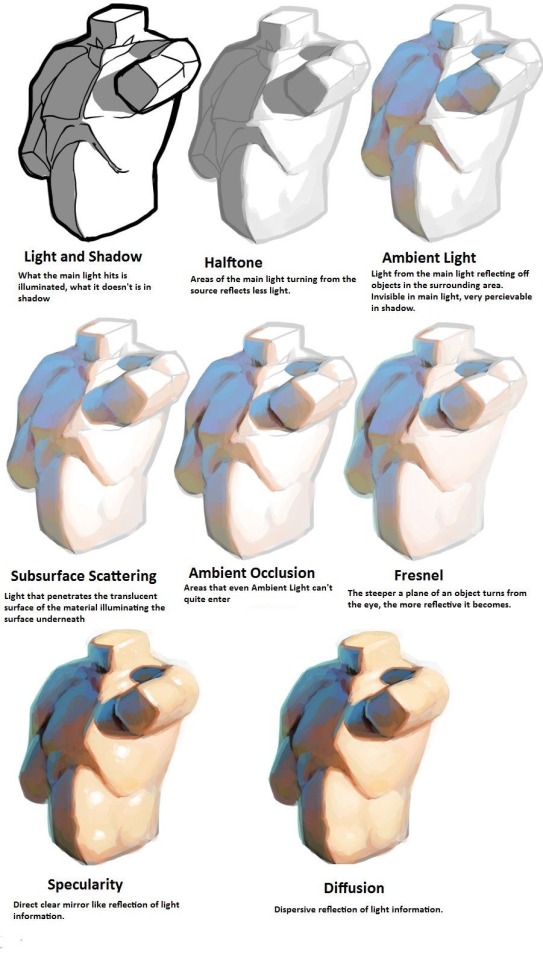

I am so serious when I say if you want to learn about light, you NEED to at least look at modeseven’s tutorials. even if you’re not pursuing a painterly style, this is all essential theory that can be easily adapted to different coloring styles. notice how none of these ever say ‘light with these colors and shade with these colors’? notice how this is teaching how light works on a mechanical level, and reminding the audience to adjust the actual colors they choose by context? THAT is good advice.
(if you’re thinking ‘wow I want to study more of this persons art!’ I encourage you to do so, but proceed with the knowledge that modeseven draws pretty much exclusively weird as hell kink art. sometimes wisdom comes from horny places)
BioShock Resource Masterpost
Due to multiple requests I’ve decided to collect all the free BioShock material I’ve shared under one post for ease of access. Because of size restrictions, some will have to be downloaded to be read, but I hope you enjoy anyways!
BioShock Artbooks
Breaking the Mold: The Art of Bioshock
Deco Devolution: Art of Bioshock 2
Art of Bioshock Infinite
If you like the physical books better, you can buy them here: The Art Of Bioshock Infinite & Deco Devolution: The Art of BioShock 2. The art book for the original Bioshock is very rare and expensive.
BioShock Novelizations & Original Pitch Document
BioShock: Rapture (eBook) (audiobook)
BioShock Infinite: Mind In Revolt (Spanish edition)
BioShock: First Person Action Horror
If you’d like a store-bought copy better, you can them here: BioShock Infinite: Mind In Revolt & BioShock: Rapture eBook or audiobook.
Extended Resources
Artbook Masterlist: All non-BioShock artbooks I’ve collected
If you’re worried about the downloads being infected/bugged or whatever don’t be- I bought them legally and am putting them up on a private google docs for easy access.
Can you give any tips on how to draw big bulky people like Hazel/Muriel/Gretchen?
I hope this can be helpful to you!

I don’t really think about how I draw characters with different body types at this point because I’ve practiced it so much but these are some rough notes on what I do.
The core of it is to just draw using thicker shapes. Don’t worry too much about exaggeration as it’ll help get you out of the mould of drawing smaller characters by default. The neck, the arms, the torso, the legs, just draw them thicker.
Study references of fat or muscular to see how the definition changes but in principle, it isn’t that much different to drawing any body type.
I draw Hazel and Gretchen to be quite bulky but because they’re teenagers when I draw them, they’re still quite soft and lack extreme definition or sharp lines, unlike when I draw Muriel who’s meant to be extreme and musclebound. Changing how soft you draw the character or how much detail you draw changes whether they look bulky from fat or muscle.

Oh yeah I made these skin tone swatches for me to use for colouring style consistencies sake but hey they might be useful to other people so I made them into one image and woo now y’all can use them lol
Probably aren’t perfect but hey they do the trick for me well enough :p





some people expressed that they would like to see my process on painting eyes, so I threw together a quick guide. I’m really bad at explaining things, but maybe someone gets something out of it. Some other information: - I use a lot of hard brushes when sketching and painting, most of them are textured. Usually I only use the soft round brush when adding big shadowed ares and light effects. - Most of the time, I paint on barely more then 2 layers: Background and character. I don’t like painting with dozens of layers and prefer to keep things simple. - I love to overuse too many colors. It’s just a stylistic choice, but I like the look of spashes of different colors everywhere, especially when they are slightly desaturated. (as seen on the second painting step)








My friend @nuclear333 asked me how I shaded hair and I promised her a hair shading tutorial, which of course became a hair…everything…tutorial.
Lots of great tutorials have already been been made on the subject so here’s me throwing in my own two cents. The usual disclaimers apply: this is how I think of hair when I draw it, and is by absolutely no means the only way, or even necessarily a correct way, to do it. I’m always happy to hear about how others approach the same subject!
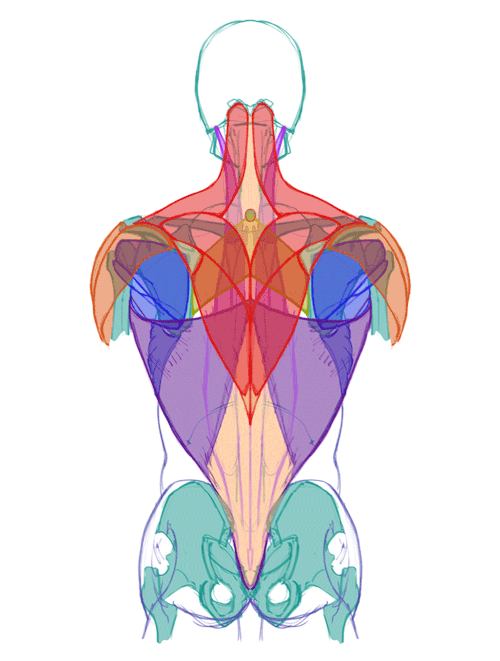

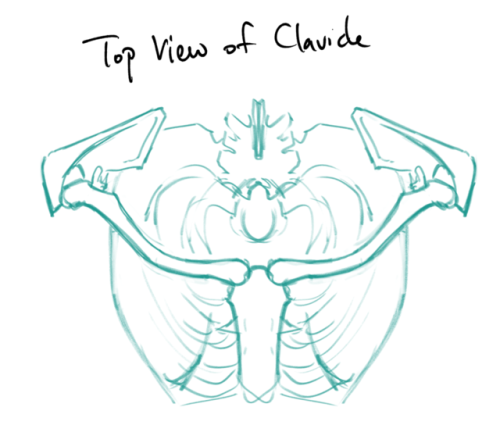
Back muscles!
SKELETAL LANDMARKS

shoulder blades: most of the upper back muscles attach to them directly, placement is affected by the arms. They can get obscured on very muscular backs, but most people these are the most dominant features!
7th cervical vertebra: neck bone that sticks out in most people, it sits in the center of that diamond shaped tendon in the middle of the trapezius
Also, obviously always keep the general shape of the ribcage and spine in mind, it was too much of a pain to draw them all in lol.
BACK MUSCLES

Erector Spinae: make the column-like structures around the spine, they extend all the way up to the neck, but you really only see the bottom part.
Latissimus Dorsi: are very thin, so most of the time you only see the structures underneath (such as the erector spinae). But when flexed, (for example, when climbing), you can see here on Jimmy Webb’s back that swooping curve it makes under the armpits.

The lats are also responsible for most of a person’s upper body strength and are the “V” shaped part of the back. For example, it’s how Bruce Lee was so strong despite being a small guy. Just look at those wings, man.


Infraspinatus, Teres Minor, and Teres Major: sit on the shoulder blade itself, and connects it to the top of the arm bone. These are responsible for a lot of the crazy shapes you see in bodybuilders’ backs.
Underneath them is the serratus anterior, which technically isn’t a back muscle but sits on the side of the ribs. These form that zig-zag pattern on the ribs that makes people look super ripped when visible with the external obliques, both wrapping around the sides of the torso. They’re not technically back muscles but fill out the silhouette, so it’s good to keep them in mind.
the glutes/butt muscles… they go farther up the back than one might assume and they, along with the pelvis, do affect the surface appearance of the lower back.

Rhomboid: simple shape, attaches from the inner edge of the shoulder blades to the middle of the spine at the 7th cervical vetebra to about the 4th or 5th thoracic vetebra. It does not overlap with the latissimus dorsi

Trapezius: divided roughly in the top, middle, and bottom sections. The top is quite thick and cylindrical and makes the sloping shape from the neck to the shoulders.
The bottom part is very thin; like the latissimus dorsi, the forms underneath it are visible when relaxed, making the rhomboid visible if it is flexed and the traps are not. Also not where the bottom part’s tendons attach to the shoulder blades; it outlines the curve of the shoulder blades even in people who are covered in brains muscles.
When fully flexed, it doesn’t taper into a point, but makes a small “w” shape at the bottom.
The 7th cervical vertebra sits at the center of the diamond-shaped tendons between the first and second sections of the trapezius. This part appears recessed in very muscular people.

Deltoid: not really a back muscle, but they overlap with the Infraspinatus and insert into the upper ridge of the shoulder blades, so it’s good to see how they interact with the others.

Ah, now for an example, featuring Thor himself. Note the curve where the traps meet the shoulder blades, the diamond-shaped tendon, and the rough “w” shaped contour of the lower back. Also note the two dimples, which is formed by the pelvis bones. They tend to be more prominent in women, although they are found in both men and women.
Try to find the back muscles on other people yourself, and then GET DRAWING

(PS, Generally it’s best to be able to simplify the forms instead of trying to render straight away - that’s how you know you really internalized the anatomy! I… honestly still don’t understand the back enough to do that yet, hence the lack of examples, unlike with the forearms post. But nonetheless, I hope that this is still useful as a general reference. I know it’s helped me at least remember what the different parts are, even if I don’t yet have a grasp of how they interact in motion!)






high quality expression references with varied facial types
need refs/inspo for period clothing?
here you go:
Medieval (9th-15th century):
10th century and earlier
Romance (1000-1250)
11th century
12th century
13th century
more 13th century
14th century
more 14th
15th century
and more 15th century
Gothic (1150-1550)
Renaissance (1520-1650)
16th & 17th century
16th century
more 16th
Tudors (1500-1550)
more Tudors
Elizabethan Period (1558-1603)
Jacobean Era (1603-1625)
17th century
more 17th century
and again
and even more
this won’t stop
Baroque (1600-1750)
Georgian Period (1714-1830):
18th century
more 18th century
18th century women’s fashion
18th century men’s fashion
Rococo (1720-1770)
Classicism (1770-1790)
children 18th-19th century
Regency Preiod (1811-1820)/ Empire (1800-1820s):
1790-1820s
more stuff on regency and georgian era
even more
that’s not enough regency
and more
how is there so much
early 19th century men’s wear
early 19th century women’s wear
Victorian Period (1837-1901):
Romantic Era (1820-1840s)
Civil War Era/1850-1860s
1870-1890s
more victorian
Edwardian Period (1901-1910):
1900-1910s
Belle Epoque (1880-1910s)
more edwardian/belle époque
Modern:
1910s-1920s [Fashion between the World Wars]
1920s
more roaring 20s
so much 20s
1920s hairstyles
1930s
1930-1940s
1930-1950s
1950s
more 50s
1960s
1960-1970s
1980s
lots of periods in one spot/fashion through centuries:
here, here, and here is almost everything (and properly ordered)
also here with lots of historic fashion magazines
100 years of beauty (includes lots of other cultures too!)
historic fashion
costumes of antiquity
more historical clothing
history of fashion
more history of fashion
“vintage” clothing
historic costumes
children’s historical fashion/toys
details
historic wedding dresses
historic assecoires (hats, shoes…)
hats
masks
parasols
lots of embroidery/jewlery
Short disclaimer: Most pictures show clothes of royalty, aristocracy, and burgoisie as their clothes weren’t worn as much and especially not for labour, which is the issue with farmers/workers’ clothes, which also were reused quite often, whether to sew new clothes or have rags. So please keep this in mind!!
It really is very European-centric as I am European as well, and I apologise for it if you expected more from it. I definitely lack the knowledge to determine what are accurate portrayals of other cultures, and to find content for them is really difficult as well. This is why I would encourage you to submit any resources you have to my blog! If you have any book recs or know good pages, please let me know!
Another edit/note: Pinterest has changed a lot since I made the post, so you need to be signed in now to see more than the first row of the boards, I’m really sorry about that! (Also I tested all the links and on my original post they still work, if you’re having isues with that.)
death omens in Polish folklore
the following things, considered to be a sign of upcoming death - or even something that would bring death upon someone - are widely present in many branches of slavic beliefs. they are deeply rooted in the belief in magic - and even if now thought by many to be merely folk superstition, they were once a very set and important way of recognizing signs, foretelling the future, and protecting yourself and your household - way of life if you will.
considering my research and sources I’m using focus mainly on Polish folklore (with lesser additions from other slavic countries) I refrained from using the universal “slavic” title and categorization.
however, keep in mind that many of those will be present in the folklore of other slavic (especially east and west) lands.
birds:
- if a rooster crows three times, it means the death is coming - similarly, if he crows at night. if a hen crows similarly to the rooster, it should be killed because it is a terrible omen
- killing a stork will bring death upon the killer and misery upon the entire village
- if a swallow hits the window and dies, it foretells a death of someone in the household
- if you hear a cuckoo while staring at the ground or looking down it means death will get you before the year ends
- if a woodpecker pecks at the door or threshold of a house it warns you about the upcoming death
- if a woman sees a black pigeon it is a sign she will soon be a widow
- if an owl hoots throughout the night near the household it is a sign that someone will soon die
- if a jay sits upon the roof, someone in the household will die
- if a nightingale sings while someone is sick or dying, it means their death will be peaceful and painless
- crows, raven, and jackdaws circling above the household were the most agreed upon death omen
dogs:
- if a dog howls relentlessly at night, it means someone will die
- if a dog howls precisely three times, it means that someone just died and their soul passed close-by
- if a dog howls while looking down on the ground, it means he sees death itself coming for someone
- if a dog keeps digging in the ground in one place it is a sign of a grave having to be dug soon
- if a dog dies while its master is sick it is a sign the person will die as well
plants:
- cutting down an elderberry would bring death upon the person who did it; cutting one growing above a pond or stream would poison the water
- a lonely tree in a field, especially if dead or slanted, would bring bad luck, demons, or even death upon someone who touched it or sat beneath it
- digging up a rowan or a hazel tree (or destroying its roots) would bring death upon the one who did it
snakes:
- killing a household or barn snake would bring bad luck, illnesses or death upon the family
- if a child was sick and a household snake died it was a sign the child would die as well
dead, corpses, funerals:
- if someone points a finger at a funeral procession, they bring death upon themselves
- falling asleep in the room where a body of the deceased was kept would bring sickness and death on the person – similarly if someone sat or put anything between the legs of the dead
- if you look a dead person in the eyes they might take you with them
- if you do not belong to the closest family of the dead person or you are not the one appointed to carry out funerary preparations, touching the corpse might bring death upon you
- if someone looks through the window of the room and sees the deceased, that person will die soon
- if the funeral procession stops randomly while going through the village, someone will die in the house by which they stopped
- do not look behind you while in the procession, as the dead person’s soul might be following and will take you with it
spring and Kupala’s Night:
- if someone fences off his household in spring – or during Kupala’s Night St. John’s Eve – and drives the stakes through the ground, they will die before autumn
- if someone bathes in a pond or river before Kupala’s Night or St. John’s Eve they might die, killed by “the evil in the water” (usually topielce, boginki, witches, evil spirits etc)
these are, in all honesty, just a part of nearly countless beliefs and superstitions connected to death - and the signs and omens.
if anyone - especially my Slavic followers - knows more and has something to add, please do so, I’d greatly appreciate it.
(main sources, other than personal research and conversations with people - especially older - in villages and cities of Silesia and Lesser Poland: A. Lebeda, Komentarze do Polskiego Atlasu Etnograficznego: Wiedza i Wierzenia Ludowe, 2002; Z. Sawicka Śmierć i pogrzeb w tradycji ludowej; B. Żurawski Ludowe zwiastuny śmierci i złe wróżby; excerpts from S. Hodorowicz, Polish Customs, Traditions and Folklore)
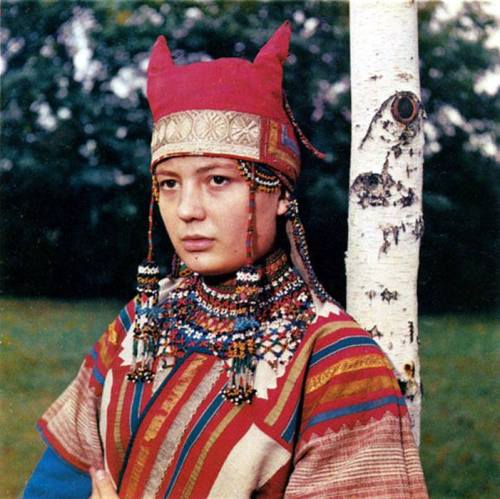
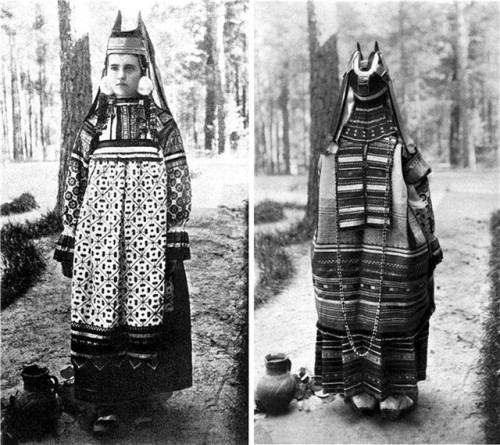
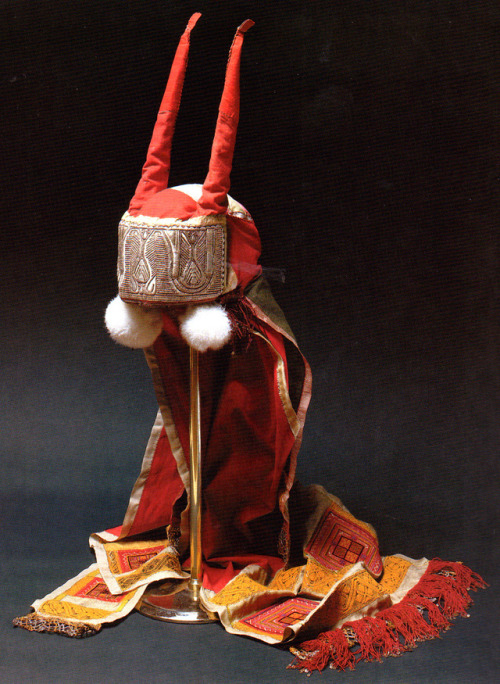
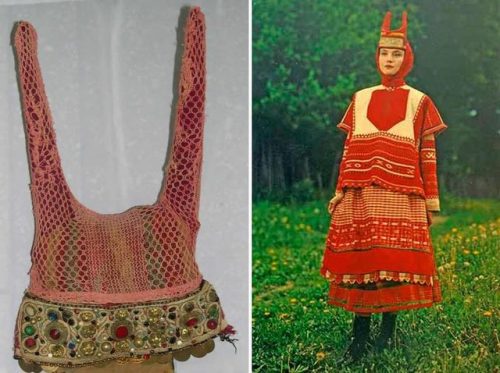
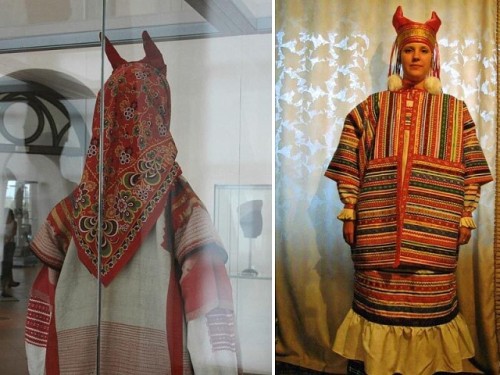
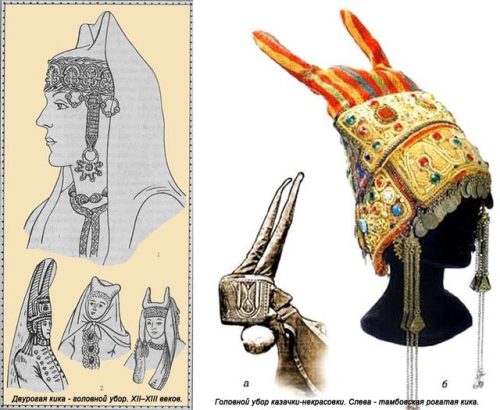
Horned kichka (Russian: рогатая кичка) is a type of ancient russian headdress for a married woman.
The horned kichka was a fertility symbol, and it served as a protection against evil spirits.

One of commissioned OCs, but I just fell in love.Due to many symbolic connotations with ravens, drew her as Veshnitsa-Soroka (Magpie-foreteller) — shapeshifting witch from slavic folklore.


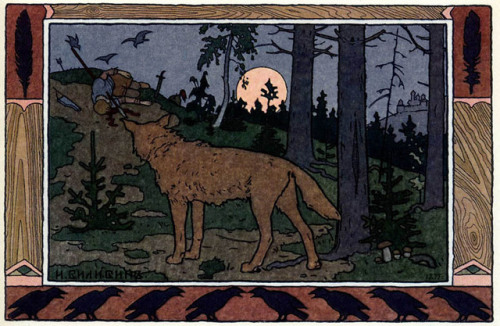
Wolves by Ivan Bilibin.
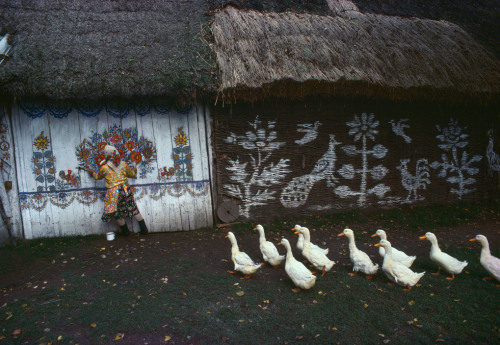
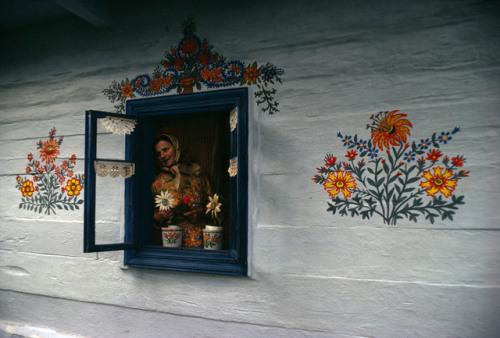
Zalipie, the “painted village” near Ternow. Houses are completely painted on the inside and outside by their owners. 1976.
Location: Zalipie, Poland
Photographer: Bruno Barbey
Slavic beliefs about treshold and hearth
The negative role of the treshold
“Together with the door, the threshold co-created a part of the border between the two fragments of space. It was placed in a point where the continuity of the boundary was breached. The importance of the threshold resulted from its dual nature: the separation of spaces and the chance to move between the two created areas. In symbolic thinking, the threshold could be identified (and metonymically replaced) with the critical points that occur when switching between two states of affairs (e.g. nature/culture, night/day) or personal statuses (e.g. childhood/adolescence, single/ married). Being a fraction of the boundary and the exponent of its crossing, the threshold had the characteristics of a border area, and therefore it was ontologically insecure. And so, because every crossing of the border was related to the risk of contacting the undifferentiated chaos of the underworld, or with touching the sacred, the threshold required special protection and the ritualistic behaviours.
The significance of the threshold in family rituals is quite clearly written in eth- nographic material. The threshold was one of the important elements of weddings or deaths, pregnant women were isolated from it. This boundary of the house did also need magical treatments. Apotropaic actions were also related to the thresholds of cowsheds and stables. The main motive of these activities was burying animals, coins, and/or unbaptized children underneath the threshold, or laying axes, garlic, brooms, knives, and/or herbs braided in a wreath on its surface.
Very few historical documents also describe the role of the threshold among Early Middle Ages Slavs. According to archaeological sources, its protective role (and, at the same time, protection over the whole house) can be confirmed by an auroch’s skull found in Gdańsk (circa 1230-1255), which was found near the south- eastern wall of a house, placed in parallel with it, in an alley between two hous- es; it could have been nailed to the top of the house as a hunting trophy. Wreaths made of twigs and hair could also fulfil an apotropaic function. A large number of wreaths made of phloem (9 pieces) was found during excavations in Gdańsk and Wolin. They were found on the streets, the square, and the vicinity of house walls in Early Middle Ages Gdańsk. Willow wreaths from Wolin were found near a wat- tle-and-daub house wall. In a nearby house some collections of wreaths placed on a corner peg were also found1. The wattle-and-daub buildings were built in the 11th and 12th centuries. They were 5 to 10 cm in diameter and were made of willow. A wicker wreath was in turn found in Szczecin inside a log cabin dating back to the first half of the 12th century. Identical wicker wreaths were present in Slavic buildings in Lund.
A possibly apotropaic meaning is connected with wreaths found in Gdańsk, Szczecin, and Wolin that were made of different materials, including horsehair. The incompleteness of archaeological material relating to the Early Middle Ages period does not allow to determine the exact role of this part of the house in apotropaic treatments. Deliberately omitted in this work is the ban on sweeping garbage over the threshold (the broom was treated as a cleanser), which is evident in ethnographic sources. According to Slavic beliefs the broom, when set on the threshold of a house or barn, defended the entrance against witches and protected from evil eyes.”
The symbolic role of the hearth
“The important part of the house was a place used for preparing meals and getting warm. According to ethnographic sources, the stove is a common component of beliefs and rituals. It was clearly a developed form of the hearth in the form of a fireplace and as such will continue to be considered, because fire was an inseparable companion of existence. Stanislaw Ciszewski assigned the following functions to the hearth:
1. it was a social environment and as such it merged individuals into a solidary group of people; 2. it was a symbol of life and existence; 3. it was a form of altar, and as such was an intermediary between a group of people and the spirits of their ancestors and the extrasensory world
The hearth discussed in this chapter has been treated in two ways: as a symbol of family life and spiritual life. The hearth constituted an integral part of life for a man and his family. It connected them to the extent that any important event was associated with it. In turn, the hearth manifested itself in spiritual life as the eternal worship of fire, seen as a god who must be adored. I am aware that this is an artificial division, but the clear application of it will help “organize” apotropaic magic activities connected with the cult of the hearth.
The fireplace or stove were a symbolic centre of family life, around which re- sided the guardian spirits of ancestors. Rituals associated with the hearth, which are the expression of a particular respect, have been observed in ethnographic material. The most archaic of them is the habit of “feeding” the fire, guardian spirits, clan, and family. These treatments are also confirmed by written sources, which speak about demons of destiny and a house spirit called uboże, which had to be taken care of by leaving food in right places. Also the available archaeological material of the Early Middle Ages allows to confirm the submission of different types of bloody and bloodless offerings near the stove and fireplaces.
Both atmospheric fire and the earthly one had sacred value, because the effect of contacting with them was the dissolution of all shapes, or, as a result, the liquidation of the opposition that characterized human oecumene: beginning-end, light-dark, right-left, and so on. This fire also had to be tamed by applying appropriate apotropaic treatments, which in this case took the form of prohibitions or commands with regard to handling fire. On the other hand fire, ashes, charcoal, or smoke were quite commonly believed to have purifying and protective powers. In the light of archaeological sources the worship of a deified fire within the house is probably the most difficult to detect. Over the centuries magical rites related to the worship of fire have changed. Perhaps the two vessels (from Wyszogród near War- saw and Radzim, Greater Poland Voivodeship) with special lightning-shaped and figural engravings on them were used during the protective magic rituals.”
Slavic protective magic in the Early Middle Ages on Polish territories by Joanna Wawrzeniuk

About Yarovit-Yarilo

Today I present you my translation of fragments of two polish academic publications that are great favorites of mine. Fragments chosen are centered around Yarovit and Yarilo. My own comments will be indicated by a „trans. note” disclaimer. The fragments below are merely a part of larger text. I apologize for any context lost to the lack of broader perspective on the whole of the publication.
Mitologia Słowian by Aleksander Gieysztor
Chapter V: Principal deities and myths
Subchapter: „Perun’s many ways - Sventovit, Ruyevit & company, Yarovit-Yarilo”
Yarovit-Yarilo
A deity called Yarovit (trans. note: Herovith, Gerovit, pl: Jarowit) was worshipped in two locations settled by polabian Slavs - in pomeranian Wolgast and in Havelberg, a gord inhabited by the Brizans tribe (pl: Brzeżanie). During the mission of bambergian bishop Otton in Wolgost in 1128 one of his priests hid from an angry crowd in a pagan temple, and there found a giant shield covered in golden plates, that was considered untouchable and would only be carried out during war time, as a blessing of good luck. The preacher snatched the sacred shield and ran back out of the temple terrifying the pursuing crowd - in the sput of the moment they thought they see Yarovit himself. One of the writers compares him to Mars, another calls him the god of war - there is no doubt Yarovit was a martial god. It’s hard to tell if there was any statue in his temple, as the escaping priest only noticed the shield. A shield is a ritual object in many martial cults, for example in roman Regia (trans. note: royal house on the ancient Forum Romanum) a most sacred shield was watched over by guards. So called „Stone of Yarovit” in St. Peter’s church of Wolgast (trans. note: Wolgast is now located in the northeast corner of Germany) is a tombstone dating to the earliest christian times. One of the polabian villagers saw Yarovit appear to him „in the robes of his idol” to warn him about the coming missionaries - so there seems to have existed some idol/statue of him (trans. note: episode from Vita s. Ottonis III by Ebonis).
There are no doubts as to the origin of this deity’s name. It came from the root jar-, jaro- meaning strength or severity, but also conveying the idea of stregth coming from youth, as in slavic word „jar” meaning spring. Similar military competences and analogical anatomy of the names strongly connect Yarovit and Sventovit (pl: Świętowit) with one another and with Perun - the supreme warrior god. We could try to follow Ivanov and Toporov (trans. note: famous russian folklorists) in their attempts to strengthen this thesis by means of analysing folklore and comparative religious studies. The baseline for all scholars here is belarusian text from 1846 describing Yarilo as a young man in white robes, barefoot, with human head under his right arm and stalks of rye in his left hand, in a herbal wreath, on a white horse. A ritual, which took place on 27th of April, to welcome spring before the first plowing, was performed by a procession of young girls, one of them dressed as Jarilo, sitting on a white horse, the others singing to her
„Yarilo wandered all over the world / Rye grew high in the fields, he gave women children / And where he set his foot/ There a stack of rye / Where he’s in the grain/ There the stalks grow tall”
Along Yarovit and Yarilo there is also a third name entangled in the cult practices, „Yarun” (pl: Jarun), a ruthenian idol named in Laurentian Codex, as well as a collection of common slavic words, ruthenian „jarovoj” - „of spring” „vernal”; polish word „jare” used to describe grains planted in the spring (trans. note: as opposed to „ozime” grains growing over the winter), ruthenian and czech word for spring „jar”.
As much as we can question the date and quality of this belarusian text it’s undeniable that there is an archaic note ringing in those beliefs - white robes and white horse, flowers and rye stalks, the head held by a victorious rider, the barefoot man, touching the earth with his feet in a cultically significant way, making grain sprout wherever he steps, opening the fields in the spring, with his name, the surveying of the fields. He has been accepted, his traits amalgamated with those of St. George (Sveti Jurij) who is celebrated in some places on 23rd of April (trans. note: julian, not gregorian), accompanied by burning of female effigy called Marena/Marzanna, personifying winter or death, a harbinger of spring. Sometimes young Yarilo is juxtaposed with the old Yarilo, who gives up his place - perhaps loses it in a fight with his young rival.
We can see a bit of a duality shaping up in the image of Yarovit-Yarilo-Yaruna. On one hand he is a warrior, on another an overseer of agricultural activity, which, despite Ivanovs and Toporov’s opinions, doesn’t take any odd naturalistic interpretations on the part of the people as it naturally belongs to the dominion of supreme deities - even Jupiter comes down to bless the roman farmer during his spring festival Vinalii, that falls on… 23rd April.
We also need to examine the toponimastic evidence: the city of Jarilovo and no less than four settlements called Jarilovic in the area od Novogrod the Great. In 18th century diocese of Voronezh festivities were held around an idol called Yarilo from Wednesday to Friday or Saturday in the week after Green Week, as late as 1673 a man would lead the festival, adorned with flowers and bells, with his face painted red and white.
Religia Słowian by Andrzej Szyjewski
Chapter V: The Lost Gods
Subchapter: „Deities of fertility and vegetation”, fragments
We can see the solar hero association even more prominently in Yarovit, worshipped in Wolgast and Havelberg. His very name „Yarovit”, „The Young Victor” is connected to spring, youthful strenght and sexual passion (as in slavic words „jar” - spring, „jurny” - virile, manly, or the phrase „stary ale jary” meaning something along the lines of „old but tough”). This particular god watched over the fertility of fields and forests, humans and beasts - or so we can guess from the threats of Yarovit’s priest made against all those who will choose the „german god” (trans. note: abrahamic god) over their local deity. In Wolgast a sacred golden shield of Jarowit was held described as „great of size and exquisitely made”, a clear solar symbol, that nobody but the god or his priest could touch. As the greatest sanctity in the temple to the polabians it was also a symbol of victory - let’s not forget that Otto of Bamberg describes Yarovit as a war god similar to Mars. As the greatest, untouchable sacred object, and at the same time the harbinger of victory it corresponds fully in its symbolism to the white horse of Sventovit. In the „Vita s. Ottonis” we find a clear reference to Yarovit as the god of military, his name is translated into latin as „Mars” („deo suo Gerovito, qui lingua Latina Mars dictur). Just like with Sventovit we see a trio of interconnected associations: fertility - solar hero - war.
The celebrations of Yarilo mentioned by the missionaries of Otto were likely the planting festival of 15th April. It could involve the god’s „descent” among the people, enacted with the help of the sacred shield. That the god spoke through the lips of żerca (slavic priest) we know from other versions of „Vita s. Ottonis” (trans. note: hagiographic writings about Saint Otto). Scholars try to reconstruct the pre-christian celebrations through XVIII century ethnographic materials concerning Yarilo (admittedly not Yarovit), with ruthenian and belarusian origins. Texts recovered from diocese of Voronezh mention local bishop putting an end to the festivities surrounding Yarilo held on 23rd April in julian calendar (15th of April corresponds in gregorian). In christian context Yarilo is replaced by Saint Jurij (description of the same ritual as one described above follows, girl dressed up as Yarilo, the same song). People would dance circle dances (korovod) on top of the freshly planted fields and end the day with a feast with orgiastic elements. The purpose of the rituals was to close the winter and open the spring; Yarilo opens the gates of earth, letting the spring out.
Yarilo’s attributes clearly point to his role as god of vegetation and fertility. The girl assuming his likeness during the festival, also known as Wiosnołka or Wiesnowka (trans. notes: pronounciation „vyos-NOHW-kah” or „vyes-NOHV-kah”) could be an echo of „divine bride”, an offering to the god, an incentive to arrive with the spring. Many songs refer to Yarilo causing the earth to sprout and bloom as he walks but also summoning dancing girls to him. Circle dances, white robes, white horse and the cut off head are all elements of solar symbolism. The head belongs to Old Yarilo, dethorned and overpowered by his young son. All over the world similar symbols exist - from celtic Curoi to mayan Hunahpu. Young Yarilo matures and dies as the harvest unfolds, then at the end of summer a funeral is held - this time main roles were played by young married women not maidens. They made an effigy of Yarilo (putting some extra effort into shaping his reproductive organs) that they called Kostrub („COST-roob”) and then they put him into his grave, in the ground since in the earth the sun loses it’s powers and dies, letting the new sun take over. The people would sing and cry out about Yarilo dying and ask him to get back on his horse in his golden saddle. Attempts to reconstruct the rituals seem to show that young Jarilo on white horse was juxtaposed with old Yarilo on black goat. Southern slavs practice similar rituals of burning old Badniak (a piece of wood with forked roots) on Christmas Eve to make place for young Božič (son of god). Western Slavs don’t have a deity corresponding to Yarilo - they close the winter in rituals involving Marena/Marzanna, followed by a procession carrying around „maik” or „nowe lato” symbolized by the peak of an evergreen coniferous tree or a rooster as a solar bird.
The Slavs were an agricultural society so agrarian deities were their primary source of relations with divine, cosmic forces. There is a certain myth/archetype that is characteristic for early farmers, the myth of creative murder, in which the first birth, growth and harvest are prompted by the first death - death of a deity, hero, ancestor, who dies sacrificing himself for the people, and from his body the first plants spring, allowing the people to survive. That myth, encated in many cultures in many ways leads to the cincept of a solar god that dies and is reborn cyclically, whose individual fate is reflected by the cycle of growing grain. The stalks loose their heads under the sickles for people to be able to feed. Yarilo (and maybe even Yarovit) makes identical sacrifice.
Art: Jaruna by Ada Konieczna


Since I have a long-form comic taking place in a sorcerer’s tower, I did a little study to level myself up on the subject of stonework walls. These are my notes on what I want.
Especially focusing on an effective way to render the background walls without drawing every single stone because aaaaa









It has been literal years since I've done a tutorial.
Nobody actually asked for this, but for the first picture I did with this type of lighting I actually went and looked up some tutorials online... and couldn't really find any. So a lot of what I did in the first picture I used this type of light was me just throwing spaghetti at the wall.
I figured it out a little more in the second picture, and then I thought: y'know i would've liked to have a tutorial like this in the first place to get a good starting point for myself. So I made one. it is yours now. do what you want with it.
bestie can we get an egg tutorial please? no one is doing it like u…..




for sure!! here's a process video and some steps along the way!
first you wanna get yourself a little reference, but as you can see i mostly just use it for inspiration, shape, and base colors. i'm not looking to recreate it realistically. after i get the lines and base colors down i just start slapping MORE colors on that bad boy!! (no blending!!!!) i like to add bits of the background color and whatever color is going to be in the other egg im drawing (in this case it was green) which you can see in the circle around the yolk, which is just a stylistic choice.
umm what else... you gotta make sure to add that pepper... oh and i like to add a lighter version of the background around the white highlights (the highlights are the only place i use pure white and i only accent them with another color sparingly)
hope this helps!!!
Wobble Tutorial
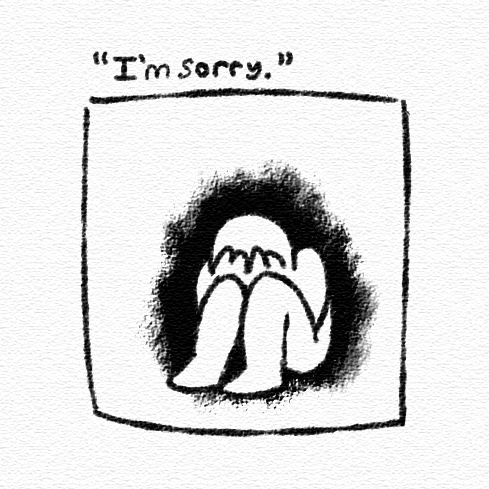
Someone asked for a tutorial on how I make my art wobble like in the above gif, so that’s what this is! It’s not very hard, all you need is a drawing program with layers, preferably Photoshop or another one with animation capabilities, but if you don’t have one, you can just export the frames individually as jpgs or pngs and compile them in another program or online gif maker. I’ll be using Photoshop in this tutorial because that’s the program I use.
Czytaj dalej



.. / … . . / -.– — ..-











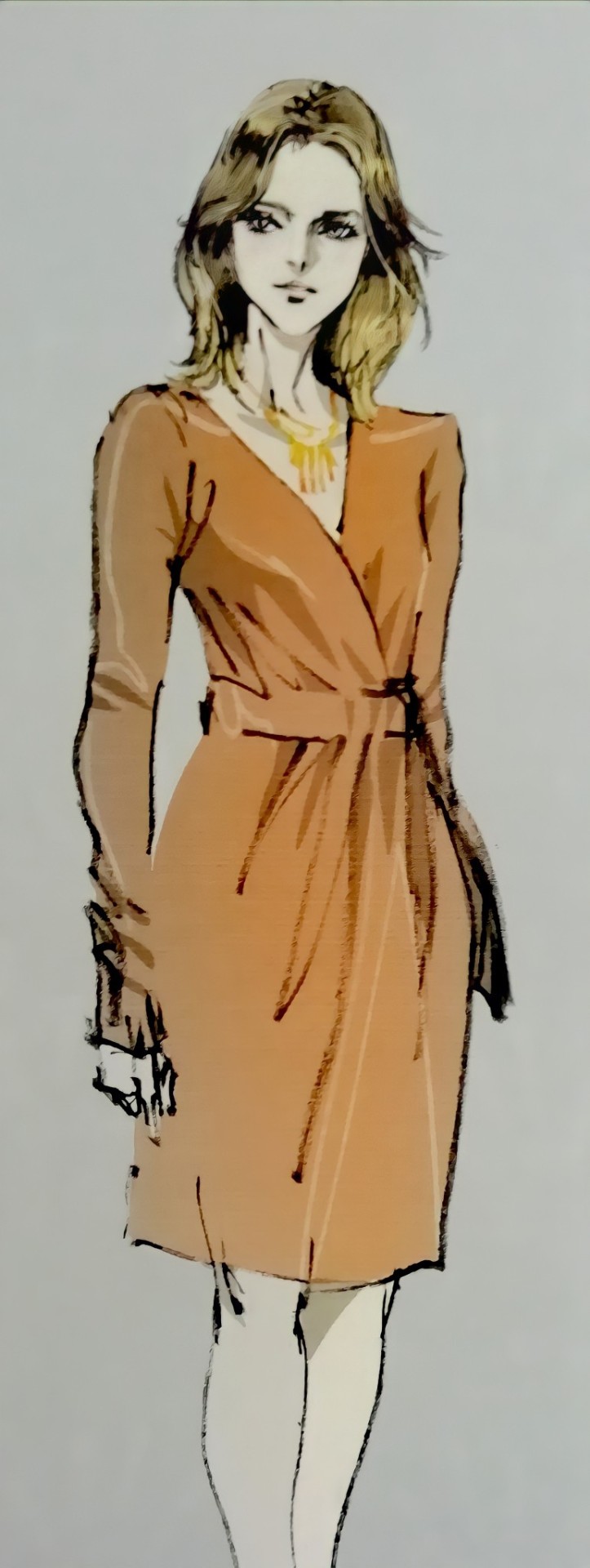


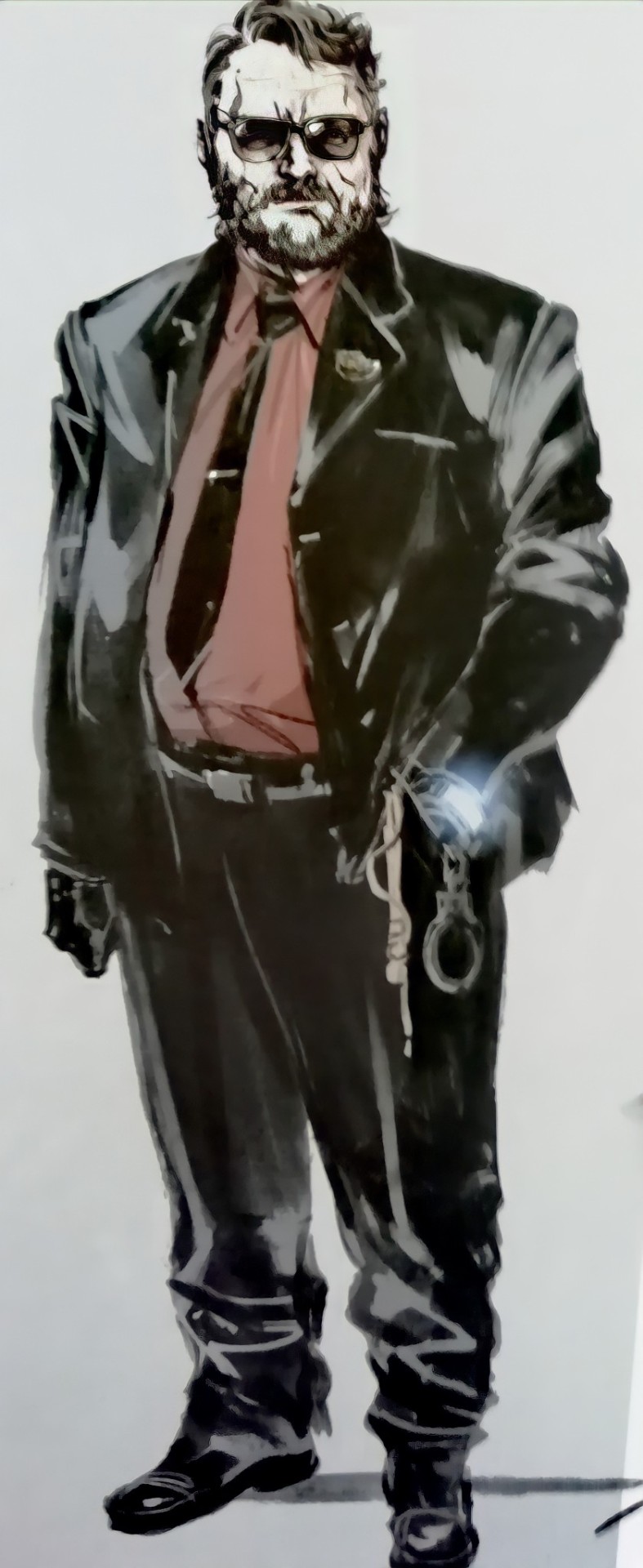
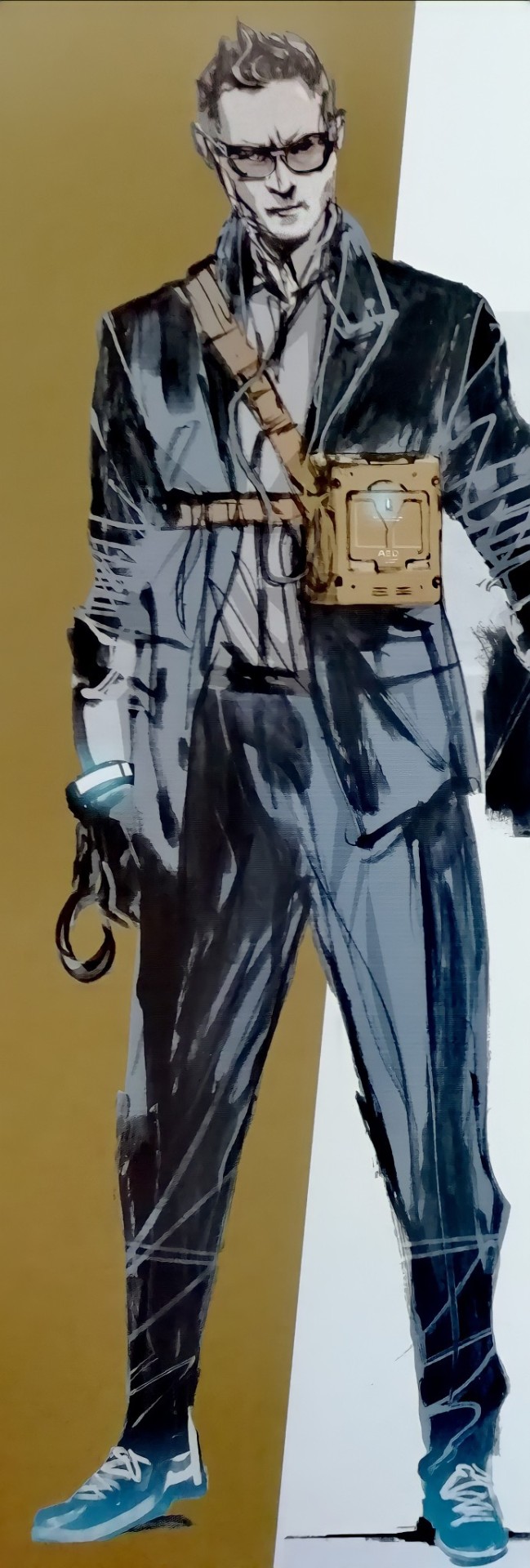

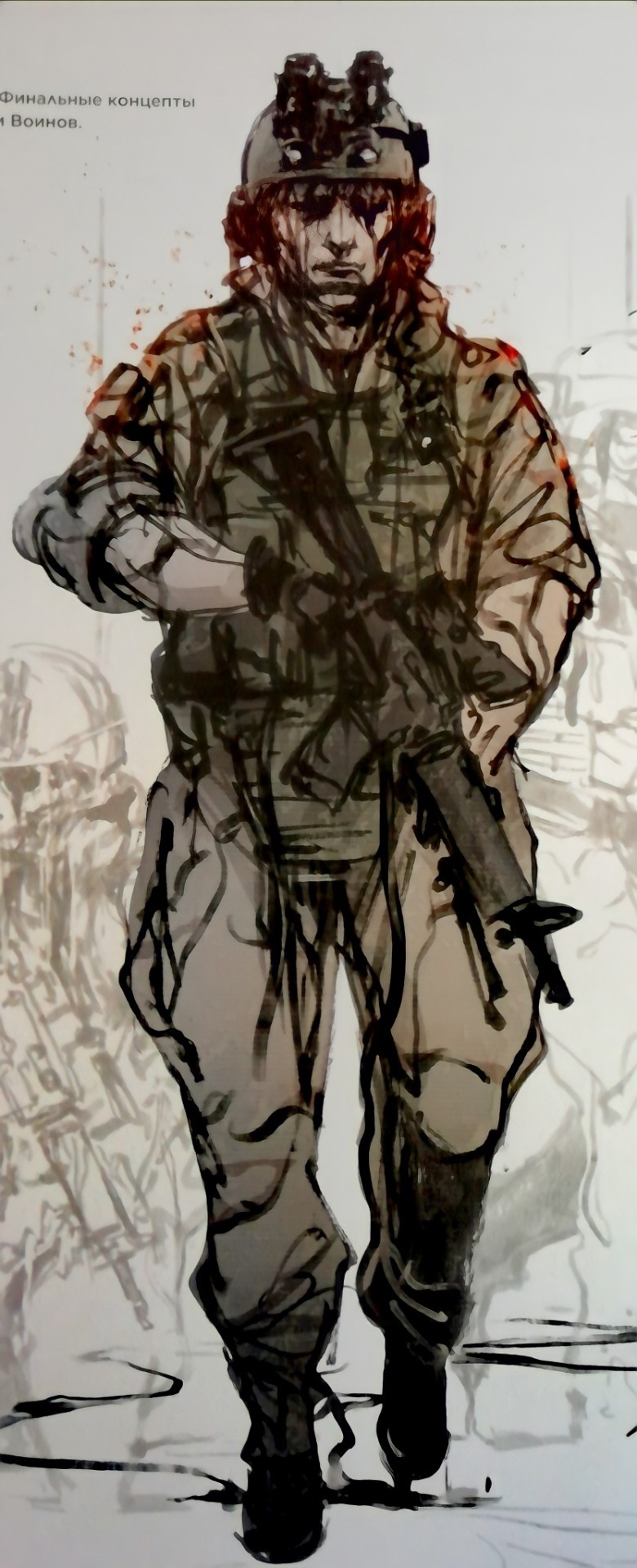
Art of DEATH STRANDING
art resource masterpost! (2019)
A list of links to all the art resources I’ve compiled since I was thirteen, from Tumblr/Twitter/googling around. They’re not all specifically drawing-related but I’ve personally found them helpful to my art + actively used or learned from each of them. Links marked with a star (★) are ones I use often, or find the most helpful!
compare heights of human figures
textures
hairstyle photos, search by colour/style/etc.
★ pinterest of tons of character design & anatomy ref boards
models.com: just modelling news/photography but nice for portrait reference + diverse faces
★ tons of tips on drawing: @grizandnorm and also @etheringtonbrothers (also on twitter and instagram)
tips for drawing backgrounds (layout & perspective) - thomas romain
selective colour tool in photoshop (helps balance out colours) - @genicecream
going from B&W to colour using photoshop curves - @genicecream
quickposes: pose library for figure & gesture drawing practice, timed drawing
wetcanvas: forum for object/still life photo references
tons of varied human poses, can sort by pose type/age/body type/etc. (warning for nudity)
★ lookbook.nu: fashion lookbook, can sort outfits by style, occasion, etc.
timed and randomized photo references for figure drawing (warning: nudity)
easy lineart in photoshop - @okolnir
guide for facial expressions - @lackadaisy
tons of pose photography, categorized by pose - senshistock (deviantart)
more timed photo references: figure drawing, animal drawing, hands and feet, faces
★ PDF of the animator’s survival kit by richard williams: comprehensive book on animation fundamentals
adobe kuler: adjustable colour wheel, creates cohesive 5-colour palettes
★ perspective grid in photoshop - @chuwenjie
interactive 3d models: human models & wooden figurine
youtube playlist of various art tutorials/speedpaints/etc. - @erinye
integrating lineart into flat colours - @dinduarte
twitter thread of general art resources (technical/fundamental skills) - @jovaline
tips on drawing backgrounds - @jovaline
simple nighttime lighting - @japhers
tips for drawing kissing - @mud-muffin
★ mapcrunch: randomized (or editable) google street view, great for environment photo reference
catalogue of theater costumes sorted by clothing item/time period, great for historical clothing reference
google’s we wear culture: information about & catalogue of fashion/design/art collections
one perfect shot database: film screencaps, can organize by shot
typefilmgrab: more movie shots
stretches to stop artist back pain (more important than half this list)
dynamic clouds - @amiamihan
avoiding empty/“dead” spaces in comic panels - @hammpix
tips on simplifying drawings for clarity - @hammpix
guide on making webcomics - @velinxi
twitter thread of storyboard/comic art resources - @nilaffle
creating depth and distance in backgrounds - @mathiaszamecki
★ croquiscafe: youtube channel that simulates figure drawing sessions (warning: nudity)
★ large PDF of storyboarding tips - @jimmortensen
another colour picker for harmonious colours
★ google drive folder of art book PDFs (anatomy & figure drawing) - @jijidraws
designdoll (free program for download): adjustable 3d human figures, better quality than online sites



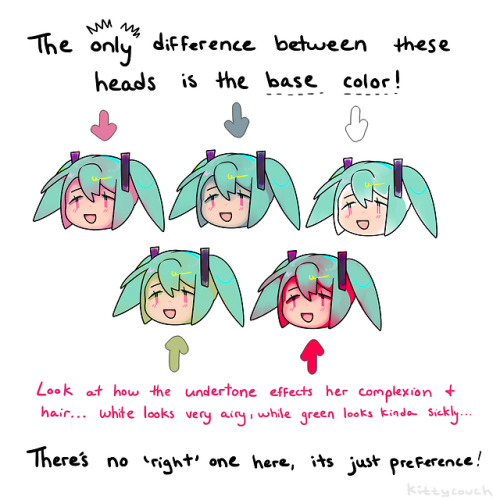
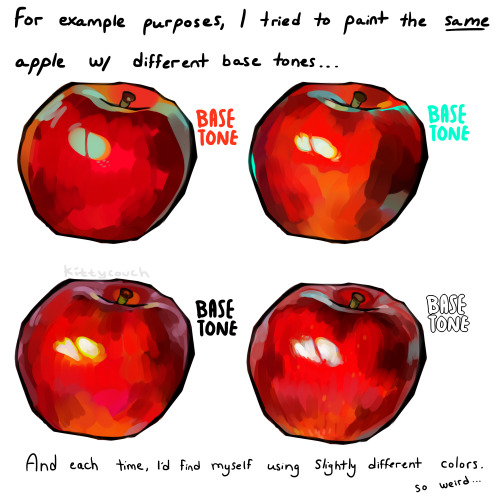
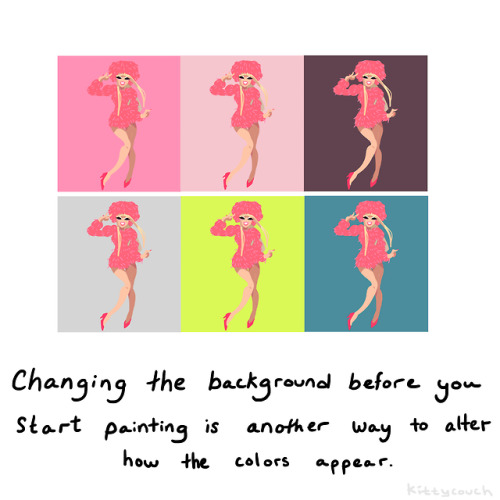
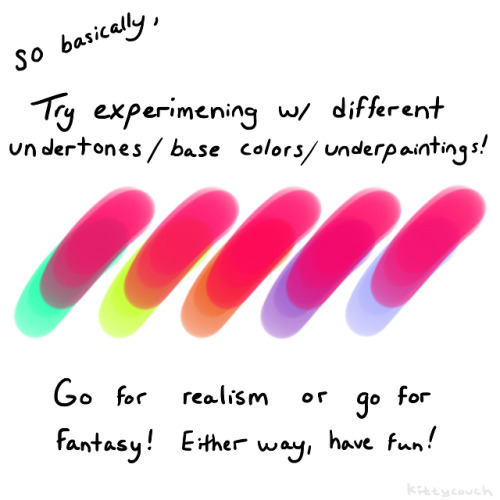
No one asked but here’s a brief tutorial on digital underpainting and how it can add some extra flavor to your art!
(I got asked this a couple times so just to clarify: I used “overlay” in the second slide… but the rest of these examples are JUST painted on, no effects! Try playing with the opacity on your pencil/water/brush tool to allow the base color to show through!)
do you have any tips for drawing a nose when the face is front facing?
This was really fast but I hope this helps:

Depending on the shape of the nose, the way you chose to render the contour lines will change. I used Rose, Quazky, and Glasner as examples in the lower right corner there. For TH, I generally don’t render the bottom of the nose with a line but with a shadow for simplicity’s sake. I hope that makes sense.
PS - I made a new brush for rendering technical drawings and I love it. *A*





i wanted to update my VERY OLD nose tutorial now that ive learned how to draw! as always, this isn’t an all encompassing guide– just a jumping off point for practice@
How do you draw a nose with a bump Also my Nena thinks your art is beautiful and that you’re very talented
a bit quick but this are some examples of many cute noses!

ofc this is not the only correct way this are just portrayed in my style you can create many many more! just don’t be afraid to do different noses than just the petit button nose! ( also ayeeeee shoutout to ur nena tell her I say hola lol )


I’m not really good at explaining or teaching things… so… Here you go. This is more like an example of how I draw noses, rather than how you need to draw them. I mean, it’s pretty basic, but maybe some artists have other ways to do it }: ? I hope it at least helps a little bit! (nothing fancy, but… yeah). sorry it took me so long to produce this half-assed thing }X D